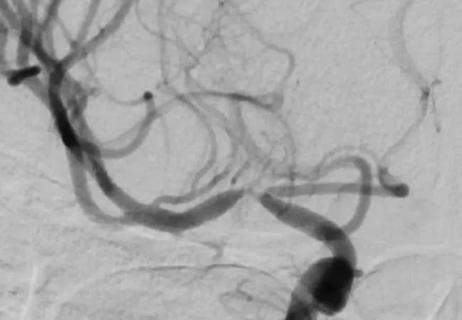A passionate specialist surveys the field’s past, present and future
“Thrombectomy holds a special place in my heart,” says interventional neurologist Ashutosh Mahapatra, MD. It was the first procedure he observed as a medical student, and the memory looms so large that he remembers the exact date: May 20, 2012. “I saw a mechanical thrombectomy for the first time. I was one of those students who loved everything, and I had no idea what I wanted to specialize in. A patient came in weak, with a right MCA syndrome. We revascularized it. I didn't participate much except for flushing syringes and wiping wires, but in the brief moment it took for the patient to be transferred from the angiography suite to the ICU, they made a full recovery. It made quite an impression.”
Advertisement
Cleveland Clinic is a non-profit academic medical center. Advertising on our site helps support our mission. We do not endorse non-Cleveland Clinic products or services. Policy
Dr. Mahapatra, now staff with Cleveland Clinic’s Cerebrovascular Center, has been passionate about interventional neurology pretty much ever since. In the latest episode of Cleveland Clinic’s Neuro Pathways podcast, he traces some advances in the discipline’s recent past, surveys current neurointerventional capabilities and shares glimpses of what’s on the horizon. He touches on the following, among other topics:
Click the podcast player above to listen to the 30-minute episode now or read on for an edited excerpt. Check out more Neuro Pathways episodes at clevelandclinic.org/neuropodcast or wherever you get your podcasts.
Podcast host Glen Stevens, DO, PhD: Beyond stroke and aneurysms, where is this field going?
Dr. Ashutosh Mahapatra: Where is it not going? I'll start with the low-hanging fruit, which is the venous standpoint. We focus a lot on arterial interventions, but there's a big focus also on the venous side of things.
Where this really shines is in conditions like pulsatile tinnitus and idiopathic intracranial hypertension, or IIH. These are, I think, the two biggest areas of excitement about doing venous work, and we've noticed that either venous sinus stenosis or some venous structural issues can typically cause patients to have these types of conditions and symptoms. For IIH, venous sinus stenting has become a robust alternative to shunting or optic nerve sheath fenestration for many patients. When it comes to pulsatile tinnitus, it didn't really have potential cures before. If it's attributed to a high-riding jugular bulb or a big venous dehiscence, it can be treated relatively easily with coiling or stenting or a combination of the two, and that really reduces the morbidity in some of these patients who didn't have any treatments before.
Advertisement
We’ve also expanded what we can do on the hemorrhagic stroke side. Take, for instance, chronic subdural hematomas, which are a real concern in our aging population that's on a lot of blood thinners. Several trials have shown a reduction in the risk of expansion or the risk of needing future surgery with middle meningeal artery (MMA) embolization for these subdural hematomas. My practice has seen huge growth in the number of subdural hematomas I treat.
Dr. Stevens: How long have we been treating subdural hematomas this way?
Dr. Mahapatra: We've been doing it for probably about three years now. It was first described in the early 2000s, but the techniques and patient selection have really become refined since then, and I think patient selection is the most important part. There are still some questions to clarify on who benefits the most, but we are now doing a lot of MMA embolizations. The volume of chronic subdural hematomas is expected to even outpace the volume of ischemic strokes. I think that there's a real opportunity to help patients there.
Dr. Stevens: So if you do the procedure, can you avoid draining the subdural in some patients, or are you just doing it in patients who are already undergoing surgery?
Dr. Mahapatra: The data show that there's benefit in both subpopulations, even the ones who are deemed nonsurgical. There are the patients who for sure need surgery. They have big hematomas and focal neurological weakness. They may have midline shift or mass effect. They're going to need some surgery to help decompress their brain, and we can use MMA embolization as an adjunct to surgery to help decrease the risk of recurrence and the risk of repeat surgeries, which is really important. We've also shown that even in patients who don’t have an emergent need for surgery, who receive MMA embolization as a standalone therapy, it dramatically reduces the risk of requiring surgery in the future, which obviously reduces morbidity and healthcare costs and has many other benefits.
Advertisement
Advertisement

When specialized surgery makes sense for moyamoya syndrome

Advances in genomics, spinal fluid analysis, wearable-based patient monitoring and more

An update on the technology from the busiest Gamma Knife center in the Americas

Success for these complex operations requires judicious patient selection and presurgical patient optimization

Overview of advances in screening, gene therapy and collaborative management

Technology helps address gait abnormality in normal pressure hydrocephalus and more

Increasing treatment options are extending the window for continued functional gains

Multidisciplinary perspectives on the importance of early referral and more